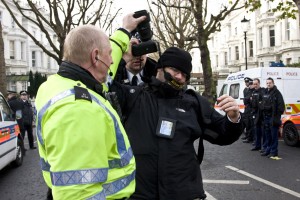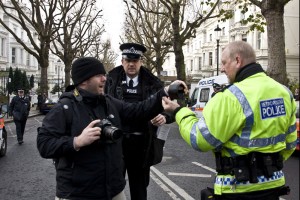Jules Mattsson, a 15-year-old photographer, challenged police officers attempting to restrict his photographing of an Armed Forced Parade in Romford on Saturday. As the recording posted to YouTube demonstrates, Mattsson was unrelenting in asserting his rights to the policeman, who eventually resorted to telling him he was a “threat under the terrorism act” and confiscating his camera. Mattsson can then be heard accusing the officer of pushing him down a flight of stairs.
Mattsson writes about the incident on his blog:
Especially poignant this incident took place the day after photojournalist Marc Vallee and videographer Jason Parkinson won their case against the met for an incident outside the Greek Embassy where Marc had his camera grabbed and Jason had his lens covered by an armed police officer. Many have hailed this ruling as ‘a victory for press freedom’, and I would be inclined to agree. However, until the met’s guidance on photography and a clearer understanding of the law filters down to the streets, we will continue to see incidents like this.
Read more on the Marc Vallee/Jason Parkinson case on Journalism.co.uk.
Source: Boing Boing


